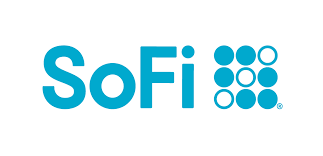Having an emergency fund is important because you don't want to have to sell investments, borrow from your retirement plan, or use a credit card every time an unexpected expense occurs.
Read on for a closer look at the best places to keep your emergency fund.
- Our team of experts assessed 100+ banking institutions
- We evaluate all banking institutions across the same 4 key criteria: annual percentage yield (APY), brand reputation, fees and minimum requirements, and additional perks
- Our bank ratings are never influenced by our advertising partners
- We strictly feature products that offer federal insurance and high customer satisfaction, keeping our recommendations unbiased
Some of the best accounts for your emergency fund
- SoFi Checking and Savings (member FDIC): up to 3.80%² APY (annual percentage yield)
- Discover® Money Market: 3.60%-3.65% APY
- CIT Platinum Savings: 4.10% APY for balances of $5,000 or more APY
Where to keep your emergency fund
There are several places you can keep your emergency fund. As long as it's in a secure place that you can access quickly in emergencies, and have little chance of losing money, you aren't making a bad call.
High-yield savings account
Perhaps the most logical place to keep your emergency fund is in a high-yield savings account offered by a reputable, FDIC-insured financial institution.
High-yield savings accounts are somewhat of a recent phenomenon. With the surge in financial technology in recent years, the online banking industry has grown rapidly, and many banks offer easy-to-navigate online savings account products. Because these companies don't have to pay for a branch network, they can pass the savings on to customers in the form of higher yields.
If you build up a $10,000 emergency fund, a high-yield savings account could mean $450 or more in essentially free money on an annual basis while you're protecting yourself against the unforeseen. Of course, it's important to realize that savings account yields can and will fluctuate over time, but a high-yield savings account can help you maximize your emergency savings in any environment.
Here are some of our favorite high-yield savings accounts for emergency funds:
SoFi Checking and Savings
On SoFi's Secure Website.
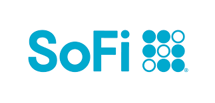
On SoFi's Secure Website.
- Competitive APY on both Savings and Checking
- No account fees³
- Welcome bonus up to $300 (direct deposit required)¹
- Early access to direct deposits⁶
- Tools to help you track savings goals
- Unlimited number of external transfers (up to daily transaction limits)
- ATM access⁵
- FDIC insured (up to $3M with opt-in to SoFi Insured Deposit Program)⁴
- Combo account only; no stand-alone savings or checking
- Maximum Savings APY requires direct deposit
- Overdraft protection⁷ requires monthly direct deposit minimum
- No branch access; online only
Only offered as a combination account, the SoFi Checking and Savings account could be a great fit for people who want to keep their emergency funds separate from their main checking account, but at the same financial institution. SoFi even offers a feature that allows users to separate a single savings account into several different purposes. If you use direct deposit into the SoFi checking account, the savings portion of the account will earn at a higher APY, and you'll have easy access to your money through a large ATM network.⁵
SoFi disclosure:
¹ New and existing Checking and Savings members who have not previously enrolled in Direct Deposit with SoFi are eligible to earn a cash bonus of either $50 (with at least $1,000 total Direct Deposits received during the Direct Deposit Bonus Period) OR $300 (with at least $5,000 total Direct Deposits received during the Direct Deposit Bonus Period). Cash bonus will be based on the total amount of Direct Deposit. Direct Deposit Promotion begins on 12/7/2023 and will be available through 1/31/26. See full bonus and annual percentage yield (APY) terms at sofi.com/banking#1.
² SoFi members who enroll in SoFi Plus with Direct Deposit or by paying the SoFi Plus Subscription Fee every 30 days or with $5,000 or more in Qualifying Deposits during the 30-Day Evaluation Period can earn 3.80% annual percentage yield (APY) on savings balances (including Vaults) and 0.50% APY on checking balances. There is no minimum Direct Deposit amount required to qualify for the stated interest rate. Members without either SoFi Plus or Qualifying Deposits, during the 30-Day Evaluation Period will earn 1.00% APY on savings balances (including Vaults) and 0.50% APY on checking balances. Only SoFi Plus members are eligible for other SoFi Plus benefits. Interest rates are variable and subject to change at any time. These rates are current as of 1/24/25. There is no minimum balance requirement. Additional information can be found at http://www.sofi.com/legal/banking-rate-sheet. See the SoFi Plus Terms and Conditions at https://www.sofi.com/terms-of-use/#plus.
³ We do not charge any account, service or maintenance fees for SoFi Checking and Savings. We do charge a transaction fee to process each outgoing wire transfer. SoFi does not charge a fee for incoming wire transfers, however the sending bank may charge a fee. Our fee policy is subject to change at any time. See the SoFi Checking & Savings Fee Sheet for details at sofi.com/legal/banking-fees/.
⁴ SoFi Bank is a member FDIC and does not provide more than $250,000 of FDIC insurance per depositor per legal category of account ownership, as described in the FDIC’s regulations.
Any additional FDIC insurance is provided by the SoFi Insured Deposit Program. Deposits may be insured up to $3M through participation in the program. See full terms at SoFi.com/banking/fdic/sidpterms. See list of participating banks at SoFi.com/banking/fdic/participatingbanks.
⁵ We’ve partnered with Allpoint to provide you with ATM access at any of the 55,000+ ATMs within the Allpoint network. You will not be charged a fee when using an in-network ATM, however, third-party fees incurred when using out-of-network ATMs are not subject to reimbursement. SoFi’s ATM policies are subject to change at our discretion at any time.
⁶ Early access to direct deposit funds is based on the timing in which we receive notice of impending payment from the Federal Reserve, which is typically up to two days before the scheduled payment date, but may vary.
⁷ Overdraft Coverage is limited to $50 on debit card purchases only and is an account benefit available to customers with direct deposits of $1,000 or more during the current 30-day Evaluation Period as determined by SoFi Bank, N.A. The 30-Day Evaluation Period refers to the “Start Date” and “End Date” set forth on the APY Details page of your account, which comprises a period of 30 calendar days (the“30-Day Evaluation Period”). You can access the APY Details page at any time by logging into your SoFi account on the SoFi mobile app or SoFi website and selecting either (i) Banking > Savings > Current APY or (ii) Banking > Checking > Current APY. Members with a prior history of non-repayment of negative balances are ineligible for Overdraft Coverage.
LendingClub LevelUp Savings
On LendingClub's Secure Website.

On LendingClub's Secure Website.
- Competitive APY
- No fees
- Easy ATM access
- Unlimited number of external transfers (up to daily transaction limits)
- Requires you to make monthly deposits to earn the best APY
- ACH outbound transfers limited to $10,000 per day for some accounts
- No branch access; online only
The LendingClub LevelUp Savings account has a lot to offer. At the top of the list is its high APY, though you must deposit monthly to earn the best rate. Next is zero account fees, a strong and straightforward perk. Finally, you get a free ATM card, which you can use to withdraw from thousands of ATMs nationwide. Interested? You can open an account for as little as $1.
CIT Platinum Savings
On CIT's Secure Website.
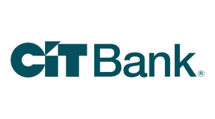
On CIT's Secure Website.
- Competitive APY
- No account opening or maintenance fees
- Unlimited number of external transfers (up to daily transaction limits)
- Interest compounds daily so your money can grow a bit faster
- FDIC insured
- Balance requirement for maximum APY
- No branch access; online only
The CIT Platinum Savings account is a great choice for people whose main priority is maximizing their savings yield. It offers a high APY for balances of $5,000 or more with no account fees. The biggest drawback is accessibility -- while there are unlimited transfers to/from the account, there is no ATM access, branch access, or check-writing. However, if you can deal with waiting a day or so for your money if you need it, this could be a great way to get the most out of your cash.
Money market account
Money market accounts can be smart places to keep emergency savings, as they combine some of the best features of high-yield savings accounts and checking accounts. Being able to simply write a check or swipe a connected debit card is a nice accessibility feature that could make a money market account worth considering.
Money market accounts often have higher minimum deposit requirements than savings accounts. For example, some may have minimum opening balance requirements as high as $2,500. With emergency funds this is less likely to be a roadblock, and there are some options with little or no minimum deposit required.
As far as interest rates go, some of the top online-based money market accounts have yields that are on par with what you might expect from a high-yield savings account.
Here are some of our top money market accounts for emergency funds:
Discover® Money Market
On Discover Bank's Secure Website.
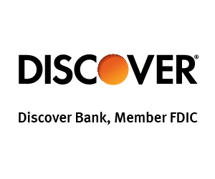
On Discover Bank's Secure Website.
- Competitive APY
- No minimum balance to maintain account
- No monthly fee
- Debit card and check availability
- No minimum deposit required to open
- FDIC insured
- Best rate requires at least $100,000
- No in-person banking/branches
The Discover Money Market account offers a range of high APYs depending on the account balance, and has no monthly fees. It has a debit card as well as check-writing availability, so you can get to your money quickly if an unexpected expense arises. The biggest drawback is the $2,500 minimum opening balance (but there is no minimum ongoing balance requirement).
Ally Money Market Account
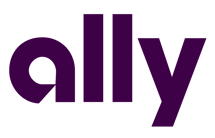
- FDIC insured
- No monthly fee
- ATM access
- Checking privileges
- No cash deposits
- No branches
Money market accounts make a lot of sense for emergency funds, as they combine the high APYs of online savings accounts with the accessibility of checking accounts, which can be valuable if you need to quickly tap into your emergency fund. The Ally Money Market account has a high APY, no minimum balance, no monthly fees, plus ATM access and check-writing privileges that can allow you easy access to your money if you need it.
Roth IRA
As a final example, one outside-the-box emergency fund solution is to use a retirement account -- specifically a Roth IRA.
A Roth IRA is a unique investment vehicle that can allow you to save for retirement and prepare for emergencies at the same time. There's a feature of Roth IRAs that allows you to withdraw your original contributions (but not any investment profits) at any time, and for any reason, without penalty. In other words, if you put $5,000 into a Roth IRA in 2022 and added another $5,000 in 2023, and you have an unexpected expense in 2024, you can access as much as $10,000 of the account early.
A Roth IRA isn't perfect for emergency savings. But it can be worth considering if you need to catch up on both retirement and emergency savings.
See our list of the best roth IRA accounts if this is the right solution for you.
How to build your emergency fund
If you don't have an emergency fund, or you do but still feel inadequately prepared for emergencies, there is no better time to get started than right now. And here are some steps to do it:
- Start by opening an account that is separate from your non-emergency checking and savings accounts.
- Make the process automatic. This is perhaps the best tip to help you get started and stick with your emergency savings plan.
- Figure out an amount of money you could comfortably afford to contribute to your emergency savings every time you get paid.
- Set up a recurring automated transfer from your checking account into your designated emergency account.
- Occasionally make additional contributions. For example, if you get a bonus from your employer, maybe allocate a portion of it to your emergency savings account.
If you do these five things, you might be surprised at not only how quickly your emergency fund builds, but how much peace of mind it gives you knowing that you could get a flat tire or need emergency dental work tomorrow and it wouldn't derail your financial life.
How much should you have in your emergency fund?
The most common guideline used by financial planners is that you should aim to have six months' worth of expenses saved in a readily accessible account. Setting aside six months' worth of rent or mortgage, car payments, utilities, groceries, insurance, and other expenses can seem like an extremely intimidating task.
Having said that, six months is a good eventual target for anemergency fund, but you might need more or less, depending on your situation. For example, if you're married or living with a partner and you both have extremely stable jobs and little debt, you may be well prepared for emergencies with far less than six months of expenses. On the other hand, if you have a relatively unpredictable income, you may want to aim even higher.
While there are some very good reasons financial planners use the six-month guideline -- specifically to deal with periods of unemployment -- many people don't reach this target for years, even if they save responsibly. The key is to get started and set milestone goals along the way, such as $1,000 or $2,000. With each milestone, you'll be better equipped to deal with unexpected financial challenges than you were before.
Learn More: Emergency Fund Calculator
| Offer | APY | Minimum to Earn APY | Fees | Next Steps | |||||||||||
|---|---|---|---|---|---|---|---|---|---|---|---|---|---|---|---|
|
|||||||||||||||
|
|||||||||||||||

Member FDIC.
Rating image, 4.50 out of 5 stars.
4.50/5
Our ratings are based on a 5 star scale.
5 stars equals Best.
4 stars equals Excellent.
3 stars equals Good.
2 stars equals Fair.
1 star equals Poor.
We want your money to work harder for you. Which is why our ratings are biased toward offers that deliver versatility while cutting out-of-pocket costs.
Rating image, 4.50 out of 5 stars.
4.50/5
Our ratings are based on a 5 star scale.
5 stars equals Best.
4 stars equals Excellent.
3 stars equals Good.
2 stars equals Fair.
1 star equals Poor.
We want your money to work harder for you. Which is why our ratings are biased toward offers that deliver versatility while cutting out-of-pocket costs.
Open Account for CIT Platinum Savings
On CIT's Secure Website. |
APY:
4.10% APY for balances of $5,000 or more
Rate info
4.10% APY for balances of $5,000 or more; otherwise, 0.25% APY
|
Minimum To Earn APY:
$100 to open account, $5,000+ for max APY
|
Monthly Fee: $0 Monthly Fee:
$0
|
Open Account for CIT Platinum Savings
On CIT's Secure Website. |
|||||||||||

Member FDIC.
Rating image, 4.50 out of 5 stars.
4.50/5
Our ratings are based on a 5 star scale.
5 stars equals Best.
4 stars equals Excellent.
3 stars equals Good.
2 stars equals Fair.
1 star equals Poor.
We want your money to work harder for you. Which is why our ratings are biased toward offers that deliver versatility while cutting out-of-pocket costs.
Rating image, 4.50 out of 5 stars.
4.50/5
Our ratings are based on a 5 star scale.
5 stars equals Best.
4 stars equals Excellent.
3 stars equals Good.
2 stars equals Fair.
1 star equals Poor.
We want your money to work harder for you. Which is why our ratings are biased toward offers that deliver versatility while cutting out-of-pocket costs.
Open Account for Discover® Money Market
On Discover Bank's Secure Website. |
APY:
3.60%-3.65%
Rate info
3.60% applies to balances under $100K, Need $100,000+ to earn 3.65%
|
Minimum To Earn APY:
$0.01-$100,000 for 3.60%; $100,000+ for 3.65%
|
Monthly Fee: $0 Monthly Fee:
$0
Min. Balance: $0 |
Min. Balance:
$0
|
Open Account for Discover® Money Market
On Discover Bank's Secure Website. |
||||||||||

Member FDIC.
Rating image, 5.00 out of 5 stars.
5.00/5
Our ratings are based on a 5 star scale.
5 stars equals Best.
4 stars equals Excellent.
3 stars equals Good.
2 stars equals Fair.
1 star equals Poor.
We want your money to work harder for you. Which is why our ratings are biased toward offers that deliver versatility while cutting out-of-pocket costs.
Rating image, 5.00 out of 5 stars.
5.00/5
Our ratings are based on a 5 star scale.
5 stars equals Best.
4 stars equals Excellent.
3 stars equals Good.
2 stars equals Fair.
1 star equals Poor.
We want your money to work harder for you. Which is why our ratings are biased toward offers that deliver versatility while cutting out-of-pocket costs.
|
APY:
3.80%
|
Minimum To Earn APY:
$1
|
Monthly Fee: $0 Monthly Fee:
$0
Min. Balance: $0 |
Min. Balance:
$0
|
|||||||||||
Our bank and credit union methodology
Our methodology for scoring banks and credit unions revolves around evaluating key aspects such as annual percentage yield (APY), brand reputation, fees and minimum requirements, and additional perks.
These criteria are weighted differently across various account types, ensuring a comprehensive assessment that reflects the competitive landscape and economic conditions.
We strictly feature products that offer federal insurance and high customer satisfaction, keeping our recommendations unbiased by advertiser influence. This robust evaluation process helps us generate balanced, reliable best-of lists that guide consumers to top financial products.
Learn more about how Motley Fool Money rates bank accounts.
FAQs
-
There's no perfect answer for everyone, but a high-yield savings account or a money market account is a great choice in most cases. The key is to keep your emergency money in a safe place that you can easily access if you need the money.
-
A CD is generally not a great place for an emergency fund unless it's a no-penalty CD. Most CDs charge you a penalty that is equal to a few months' worth of interest if you withdraw money before the CD's maturity date, and this isn't ideal. There are other places, like a high-yield savings account, that don't have any withdrawal restrictions.
-
It depends. Financial planners generally suggest aiming for six months' worth of your expenses in an emergency fund, but a $5,000 emergency fund will put you in good shape to deal with many potential unexpected expenses.
We're firm believers in the Golden Rule, which is why editorial opinions are ours alone and have not been previously reviewed, approved, or endorsed by included advertisers. Motley Fool Money does not cover all offers on the market. Motley Fool Money is 100% owned and operated by The Motley Fool. Our knowledgeable team of personal finance editors and analysts are employed by The Motley Fool and held to the same set of publishing standards and editorial integrity while maintaining professional separation from the analysts and editors on other Motley Fool brands. Terms may apply to offers listed on this page. APYs are subject to change at any time without notice.
